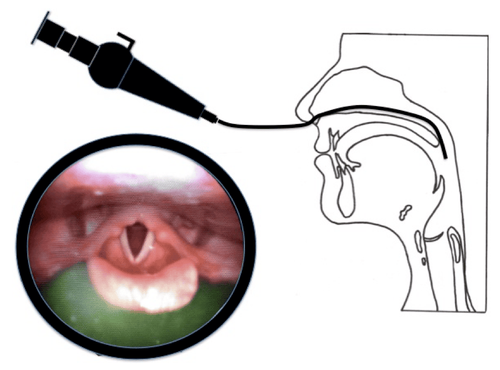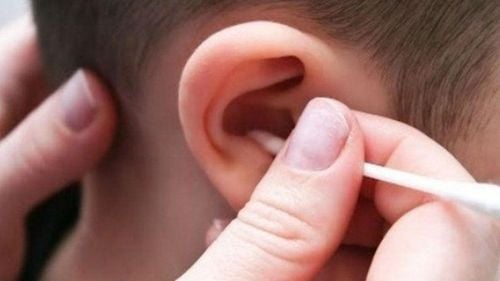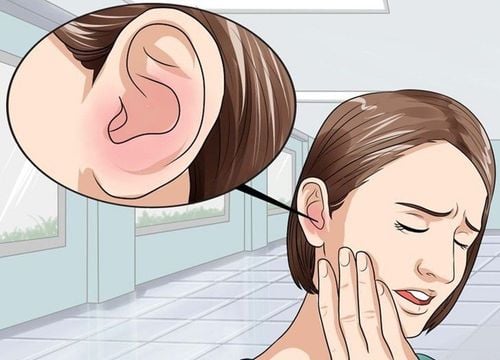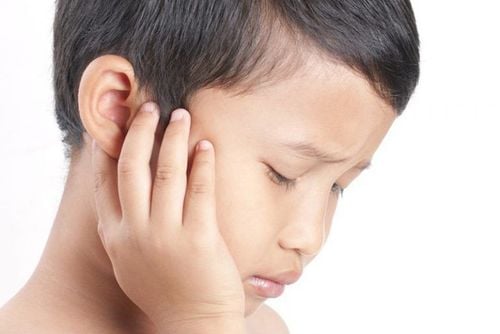This is an automatically translated article.
The article was professionally consulted by Specialist Doctor of Otolaryngology - Department of Medical Examination and Internal Medicine - Vinmec Hai Phong International Hospital.
Otolaryngoscopy is a modern method to help diagnose diseases of the ENT region. Currently, this subclinical examination is being widely applied in many different hospitals, both playing a role in diagnosing diseases and supporting the treatment of ear - nose - throat diseases effectively.
1. What is otolaryngoscopy?
Otolaryngoscopy is a method of using a specialized endoscope with a light and a micro camera at the tip to put it deep inside the nooks and crannies of the ear, nose and throat. Then, the endoscopic image inside will be enlarged and displayed on the television screen. This will help the specialist see directly, recognize the location and extent of the injury, thereby helping to accurately diagnose the cause of the disease and choose the appropriate treatment.
Otolaryngoscopy has been widely used in our country since 2000. This method has helped the country's medicine to end the period of "blind" examination, through simple medical devices such as: : Tongue depressor, flashlight... The rudimentary tools can only help the doctor see the superficial part of the pathology, it is difficult to make an accurate diagnosis of lesions located deep inside the ear area - nose - throat.
2. What is otolaryngoscopy for?
If the patient experiences ENT symptoms, he or she should see a doctor for advice and consider whether a diagnostic endoscopy is necessary. This otolaryngoscopy method can be used to detect diseases such as:
Detect foreign bodies in the ear, nose or throat. Detecting suspected cancer diseases such as: nasopharyngeal cancer, laryngeal cancer .... Detecting ear diseases: otitis media, otitis externa, tumor in the ear, perforated eardrum, tinnitus, deafness ... Detecting diseases of the nose: Acute or chronic sinusitis, hypertrophy of the nasal peduncle, deviated septum... Detecting diseases related to the throat: nasopharyngitis, tonsillitis, inflammation of the tonsils VA, laryngitis... Thereby, the diagnosis of the disease will be accurate, making a significant contribution to the treatment if the disease is still at an early stage.
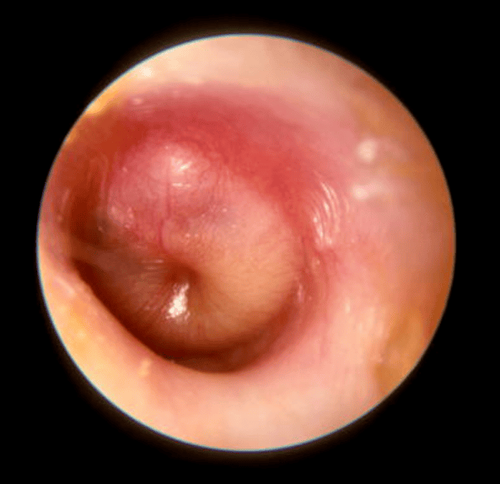
3. Indication for otolaryngoscopy when?
Patients of any age who have problems with the ear, nose and throat should also undergo endoscopy as prescribed by the doctor. Warning signs of pathology that need to be endoscopically to accurately diagnose the cause include:
Patient has ear symptoms such as: ear pain, tinnitus, hearing loss, ear itching, ear discharge.. Patient has frequent nosebleeds. Patients have signs of sinusitis for a long time such as: Continuous headache, stuffy nose, sneezing, runny nose... Find the cause of sinusitis such as: Deformed septum, enlarged hook stage, nasal polyps .. Hoarse voice for a long time does not go away. Dry mouth, unusual odor in the oral cavity, choking, difficulty swallowing saliva. Swollen cervical lymph nodes at jaw angle, small lymph node size, firm nature, painless pressing. Having a foreign body in the ear, nose, throat. Unexplained weight loss. Suspected tumor in the oropharynx, nasopharyngeal cancer...

4. What is the otolaryngoscopy process like?
Depending on the symptoms of the disease, the doctor will prescribe different endoscopic methods:
4.1. Ear Endoscopy Patient sitting upright, the doctor inserts the endoscope along the axis of the external ear canal, observing the tympanic membrane, the external ear canal and other parts of the ear.
4.2. Nasal endoscopy Position: The patient tilts the head back at an angle of 15 degrees. The doctor will place a cotton swab soaked in a vasoconstrictor and local anesthetic into the patient's nose for about 5 minutes.
The vasoconstrictor will help shrink the nasal tufts, widening the nasal cavity so that the endoscope can be inserted more easily. Anesthesia helps the patient to feel less pain during the procedure. The doctor will insert the bronchoscope into the nasal cavity, up to the ethmoid septum, behind the nasal slit. Nasal endoscopy images will be displayed on the screen and recorded if lesions are detected in the nose area.
4.3. Endoscopy - laryngoscopy Posture: The patient sits upright, legs straight. The doctor will insert the endoscope into the pharynx, on the surface of the tongue, from the outside to the inside to observe the positions on the surface of the tongue, observe the uvula, isthmus, 2 tonsils, the bottom of the tongue, and the bayonetula on both sides. , glottis, funnel cartilage, and vocal cords. The ENT procedure usually happens very quickly, the patient will not feel too much pain or discomfort during the endoscopy.
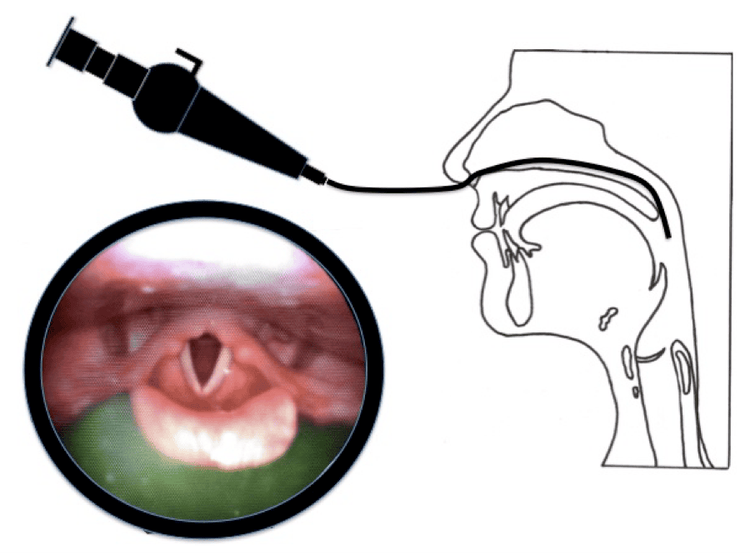
5. Complications of otolaryngoscopy
In the past, otolaryngoscopy usually used a rigid tube to perform. The disadvantage is that it causes burning pain and discomfort when the endoscope tip touches the patient's nose or throat. Today, however, the use of flexible bronchoscopes has been switched, which effectively solves this problem.
The time for otolaryngoscopy is usually only about 5 to 10 minutes, there are very few serious complications when performed. The mild complications that can occur are bleeding due to the bronchoscope hitting the mucosa, more severe cases can perforate the eardrum (in otoscopy) but very rarely. In a few cases, patients feel uncomfortable during nasal endoscopy due to narrow nasal cavity, deviated septum causing much compression of the nasal cavity...
Otolaryngoscopy is a modern imaging method. , providing clear images to help doctors assess the pathology as well as damage to the ear, nose and throat area.
To improve the medical examination and treatment process, currently, Vinmec International General Hospital has applied ENT technique in examination, diagnosis and treatment of diseases. The ENT procedure at Vinmec is carried out methodically and according to the standards of the procedure by a team of highly skilled medical doctors, modern and standard machinery system. Thanks to that, the results are accurate, contributing significantly to the identification of the disease and the stage of the disease.
If you have a need for medical examination by modern and highly effective methods, please register at Vinmec.




